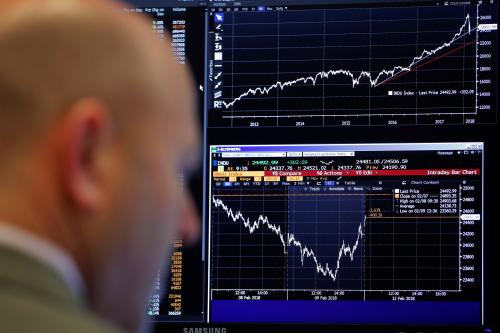It’s impossible to know how long the U.S.-China trade war may drag on, but let’s assume that we could still be in its early days. And already, we can see patterns in the data that reveal why the U.S. strategy is a poor one.
The U.S. has imposed 25% tariffs on $250 billion of products from China and is threatening 25% tariffs on the remainder of our imports from China—an additional $300 billion. The objective for the Trump administration is to reduce the U.S. trade deficit, bring manufacturing jobs back from China to the U.S., and put an end to unfair Chinese trade practices including forced technology transfer, intellectual property theft, and subsidies to state enterprises.
With the growing U.S. protection aimed at China, U.S. imports from China are declining. In the most recent data, from January through April, the U.S. imported $20.6 billion less from China than in the same period of 2018 (see chart). But imports from other partners have gone up. Increased imports from Mexico, South Korea, and Taiwan partly reflect shifts in global value chains. China is at both the middle and end of many value chains. If final assembly shifts to Mexico (or Vietnam, or Bangladesh), then the U.S. tariffs can be avoided. China is still providing much of the value added; its exports to countries other than the U.S. are rising. Foxconn, the Taiwanese company that assembles phones for Apple, has said that it could service the U.S. market from non-Chinese plants that it already has. Meanwhile, it will still continue to produce in China, for the Chinese, European, and other non-U.S. markets.
Note that imports from Europe are up as well. This probably does not reflect reshuffling of value chains to Europe. Rather, it reflects the fact that a country that imposes protection can expect its currency to appreciate so that it imports more from any partners not hit by the protection. Excluding OPEC, total U.S. imports have increased, not decreased during this experiment with protection.
What about trade balances? The U.S. deficit with China decreased by $11.7 billion in the first four months of the year. But the U.S. deficit with just about everyone else went up. And the total U.S. deficit, ignoring OPEC, went up as well. This accords with theory and history. The protection aimed at China is not likely to improve the overall U.S. trade deficit because value chains relocate to other partners and the U.S. dollar appreciates. This is similar to the results from protection in the 1930s and the 1980s; U.S. imports from targeted partners went down, but so did U.S. exports, and there was no improvement in the U.S. trade balance. The U.S. is likely to see some improvement in the trade balance because of falling imports from OPEC countries, arising from increasing oil and gas production at home. But this has nothing to do with the trade war with China.
The evidence to date is consistent with the view that the trade war with China is not likely to reduce the U.S. trade deficit or bring manufacturing jobs back home. But what of the argument that this is a tactic meant to change China’s unfair trade practices? The problem with this approach is that changing China’s behavior requires cooperation with partners like the European Union and Japan. But none of our partners agrees with this tactic. While U.S.-China trade declines, their trade with China is increasing. China has reduced tariffs and trade barriers overall to encourage this trade, but U.S. firms are largely shut out because of the reciprocal tariffs in place. The U.S. could have brought a joint case at the WTO, with the EU and Japan, on technology transfer and IPR issues. And/or it could have stayed in the Trans-Pacific Partnership and built a community of like-minded economies. Instead we chose a bilateral trade war with China, and that seems to be failing in terms of all of the stated objectives.
The Brookings Institution is committed to quality, independence, and impact.
We are supported by a diverse array of funders. In line with our values and policies, each Brookings publication represents the sole views of its author(s).







Commentary
It’s time to give up on the failed trade war strategy with China
June 24, 2019